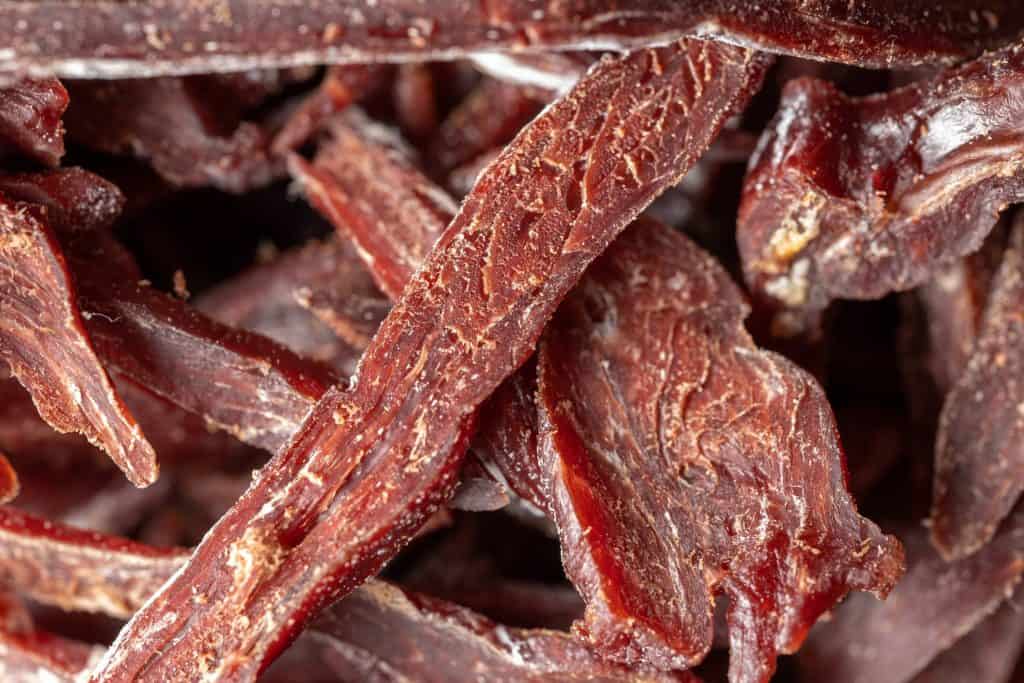Some crabs are too small to sell individually and are usually measured by the bushel. If you don’t want to be played by some savvy merchant – or worse, run afoul of state government regulations – it’s important to understand what exactly constitutes a bushel of crabs. This value is subject to change, so pay attention to factors that alter it.
How many dozen crabs in a bushel? On average, you can expect about 6- 7 dozen crabs in a bushel. A bushel is a unit of volume, and subject to change depending on crab size, gender, molting condition, and even local laws. You’ll get more meat out of bigger crabs in a bushel, and less if they’ve just molted. When buying crabs to eat, buy the largest ones available for a better dining experience.
While not all crabs are sold by the bushel, it’s still important to know what goes behind the measurement. That information is crucial to getting the best value for your purchases.
Bushels
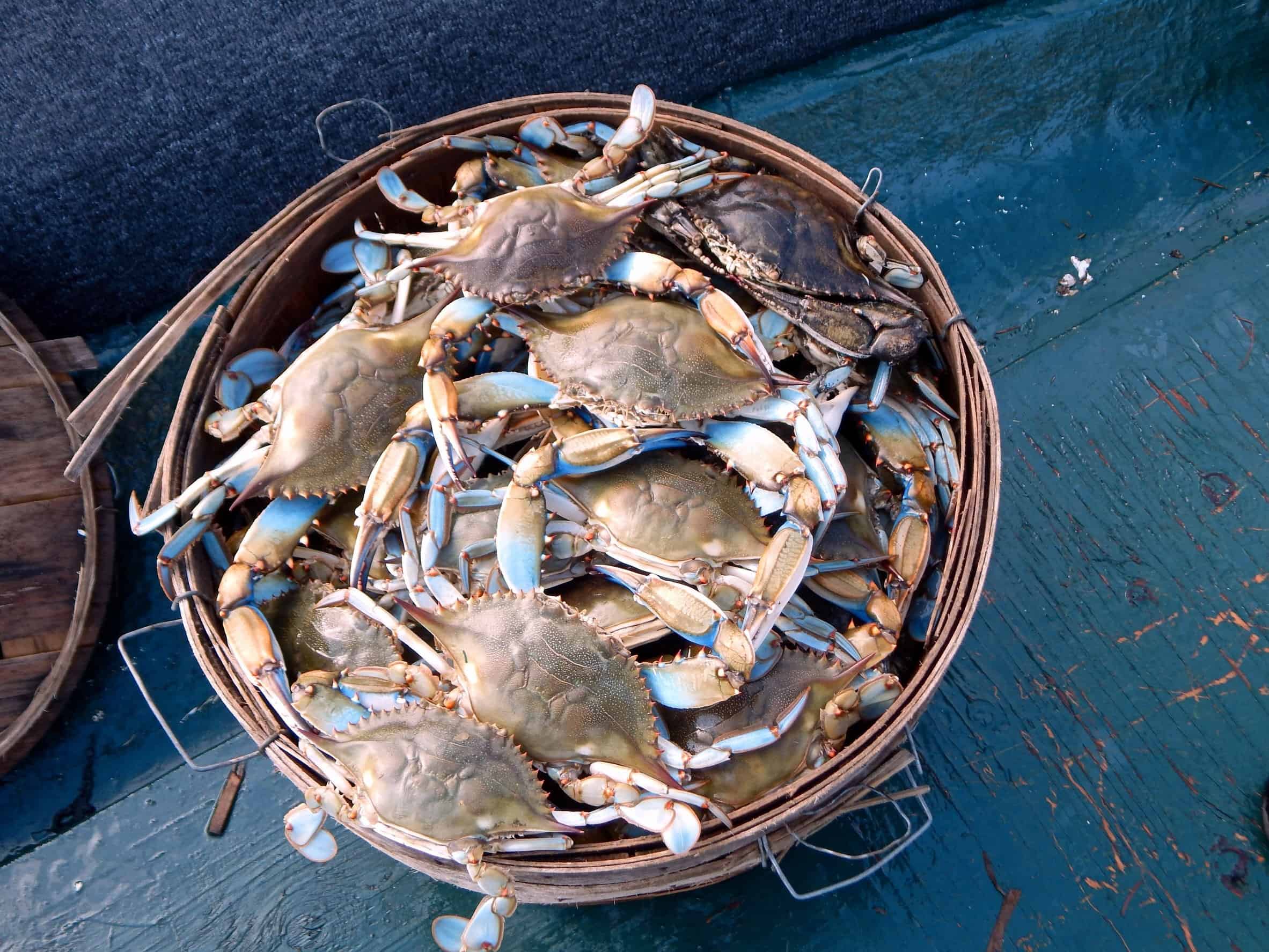
A bushel is a unit of measurement that roughly equals about 8 gallons (35.2L). It measures volume, not weight, and is used to handle dry goods in larger quantities.
Not all crabs are measured this way. Larger specimens like Dungeness or King crabs are sold apiece. One of the most common crabs measured this way is blue crabs. These make for a great baseline for gauging crabs by the bushel, so the article will stick to that assumption for practicality.
Lidden, wooden baskets are used to measure a bushel. States measure their bushels differently, so a container that fits regulation in one area won’t necessarily be accepted in another.
As much as possible, try to buy a bushel basket from the state you’re in. This saves you time and potential legal concerns when out crabbing.
When buying crabs, it’s always best to use your own bushel basket – some sellers might try to stiff you on quantity otherwise. It’s better to look knowledgeable and dissuade that behavior. Having your own basket goes a long way towards supporting that image.
Bushel volume will fluctuate even in the same area. Below are a few reasons why.
Crab Sizing Variants
Crabs can fall under a few distinct size categories, with quantity inversely proportional to their size. These are taken by measuring length across their carapace – the back part of their shell.
| Size | Length Across | Dozens per bushel (Total) |
| Small | 4-5 inches | 8-9 dozen (96-108) |
| Medium | 5-5 ½ inches | 7-8 dozen (84-96) |
| Large | 5 ½ – 6 inches | 6-7 dozen (72-84) |
| Jumbo | 6-6 ½ inches | 5-6 dozen (60-72) |
| Colossal | x > 6 ½ inches | x > 5 dozen (x < 60) |
While these ranges are standardized, you likely won’t encounter “small” or “colossal” batches being sold in the same quantities as the more median sizes available. “Average” crabs usually fall somewhere around the medium-large range.
Having a smaller total count is actually a good thing, unlike most other dry goods. You’ll get much more value out of larger crabs, though the price will rise accordingly. It primarily boils down to finding the right balance between size and price for your cooking plans.
Crab Gender Differences
Crabs are one of the few animals where gender significantly alters your dining experience. While most sellers will be upfront about what they’re selling, it’s not a bad idea to brush up on a few ways to spot the difference.
Telling them Apart
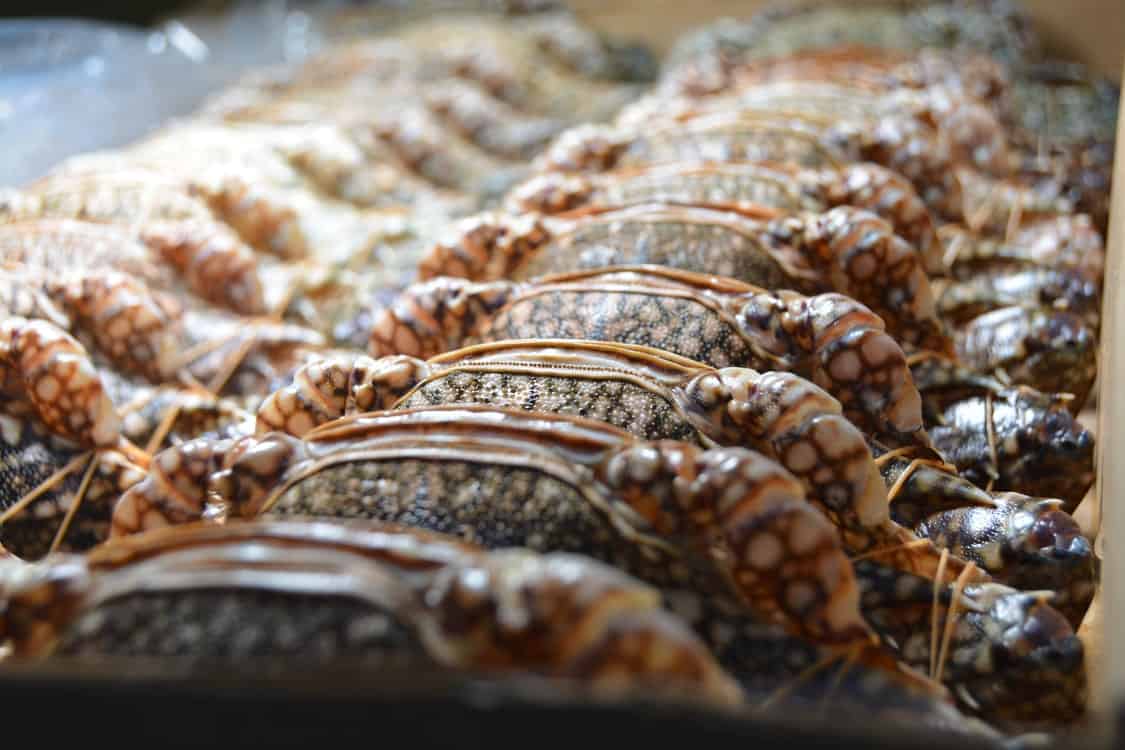
Unlike most animals, you can gauge gender difference from size somewhat reliably. Female crabs, upon hitting maturity, will halt their growth altogether. Male crabs will keep at it, growing bigger and meatier with age. Most female blue crabs max out at 4-5 inches across, and anything above that will almost always be male.
When checking between smaller crabs, you might need clearer characteristics to home in on. One of the easiest ways to do that at a glance is by checking their claws. Female crabs wear “red nail polish” as most aficionados say. Male crabs have a more mundane blue coloration to their claws.
Another way to do so is by looking at their underside’s “apron”. Male crabs have slim, elongated aprons pointing up. Mature female crabs have rounder aprons that are easily thrice the width of their male counterparts.
Sometimes, you might find a triangular apron – that just means you’ve got an immature female crab on your hands. If you’re out crabbing, release it immediately. If you’re out buying, steer clear of them. They wouldn’t be worth the meat in their shells, and you could be slapped with a fine.
Experience Changes
It’s been claimed that female crabs boast a sweeter, denser taste to their meat. There’s been little discovered to corroborate that. When it comes to more tangible differences, male crabs are very hard to beat.
Male crabs are larger, which means they have a lot more edible meat in their shells. Crabs are already pretty tedious to prepare. Unless you’re buying deshelled crab meat, male crabs will give you greater value for your time and effort.
Female crabs also have a bit of red tape protecting them to a limited degree. In certain areas, it’s illegal to keep or sell immature female crabs. If you’re doing some amateur crabbing, that tidbit could save you money on inconvenient fines. There’s also a catch limit in play for certain seasons.
While both crab genders are subject to minimum size limits, it’s a lot more likely for female crabs to fall short due to their growth halting at maturity. Lastly comes the opportunity cost of eating a female crab – they only mate once in their lifetime, during a brief window of time. A female crab cooked for a meal means a hypothetical loss of 2-8 million crab eggs in the water.
Female crabs are cheaper to buy than male ones, though usually in smaller quantities. That dynamic is usually inverted for most market animals. Male crabs just have more pronounced advantages for buyers and sellers alike, and make for a better choice when buying by the bushel.
Weight vs Meat
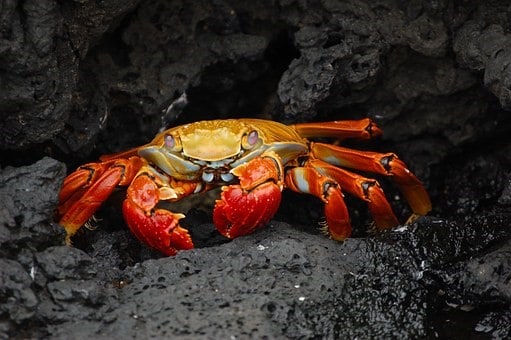
Crab shells are made of hard, heavy chitin. It’s a huge contributor to a crab’s hefty bulk, with edible meat only contributing a measly 14% of their total weight at best. This value goes even lower if the crab has molted recently, as this process burns clean through their fat reserves.
For reference, the average blue crab weighs about a third of a pound. An experienced chef can harvest about 2 1/4th ounces of good meat per pound of crab. That amount is already pretty stingy, but a normal person would lose out on even more during the picking process. Coupling that with the sheer fatigue of sorting through crab carapace and viscera makes the whole ordeal exhausting.
This makes larger crabs ideal, as they provide more valuable meat for less work. While it might sound counterintuitive, always buy the largest crabs available for your bushel.
Molting
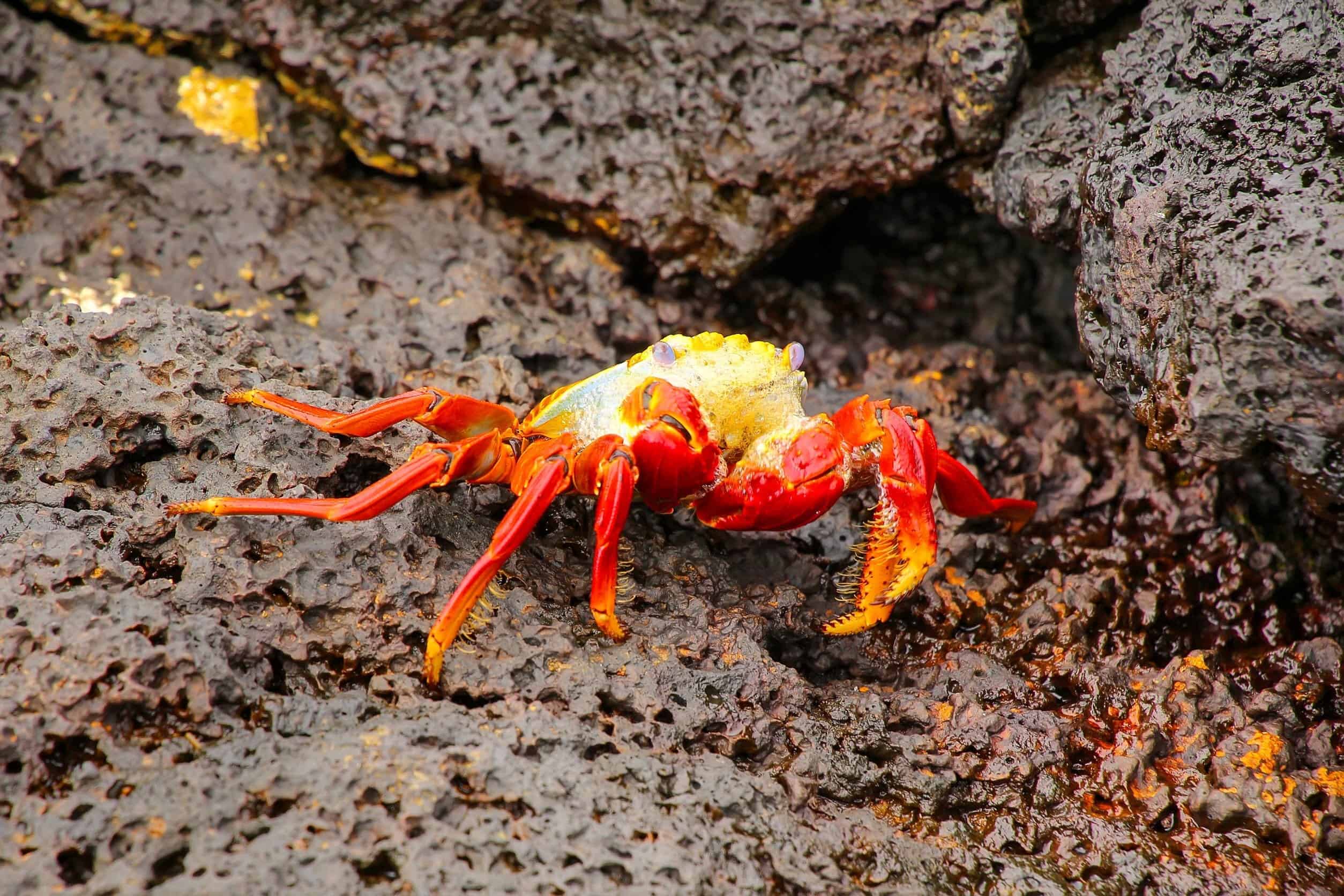
Just because your crab is large doesn’t guarantee it’s filled with meat. Crabs undergo an annual process called molting, and this severely alters the animal’s condition for a good chunk of time.
Molting Process
Molting is the shedding and replacement of certain animals’ outer layers. For crabs, this means the carapace is done away with, alongside a few other organs like gills and eyes. It’s very easy to mistake molting crabs with dead ones.
A crab’s shell cannot expand– chitin simply doesn’t have that property, unlike the bones in our body. It needs to be broken through and remade to accommodate a crab’s future growth. Naturally, the molting process is very stressful on the animal.
Both male and female crabs molt, with the first step being rigid fasting. It’s not a stretch to say it renders the crab almost skeletal, depleting the lion’s share of their fat reserves. After a certain point, a crack forms in their old shell. They bust through with their newer, softer shell, and wait in the sand for it to harden – this can take upwards of several days, and the crab won’t feed at all.
Their body weight in edible meat is already very low, and catching crabs fresh off a molt will only lead to disappointment. It takes a good while for them to build back their stockpiles, and it won’t be immediately obvious at a glance if you’ve got a crab post-molt.
Signs of Molting
Honestly, molting is pretty hard to identify – a lot of their common signs overlap with death. A molting crab will smell horrible and look lifeless. It might twitch from time to time, but it’s hard to take that as a decisive sign.
Check for colored signs on the crab’s exoskeleton. It’s actually possible to make out the second skin forming under, though admittedly very difficult. A pink tint to their backfin indicates they’ve got less than a week to their molt. A red tint emerges once their molt is due in less than two days.
These methods take a bit of time and practice. They make for good lessons if you’re planning some recreational crabbing.
If you just want to check if they’ve got plenty of meat, simply press down on their abdomen. Crabs post-molt fill their bodies with water, which renders that space into a hollow cavity. A meaty crab won’t give you much space to push down, while a leaner one buckles a bit under pressure.
How Many People Can A Bushel Feed?
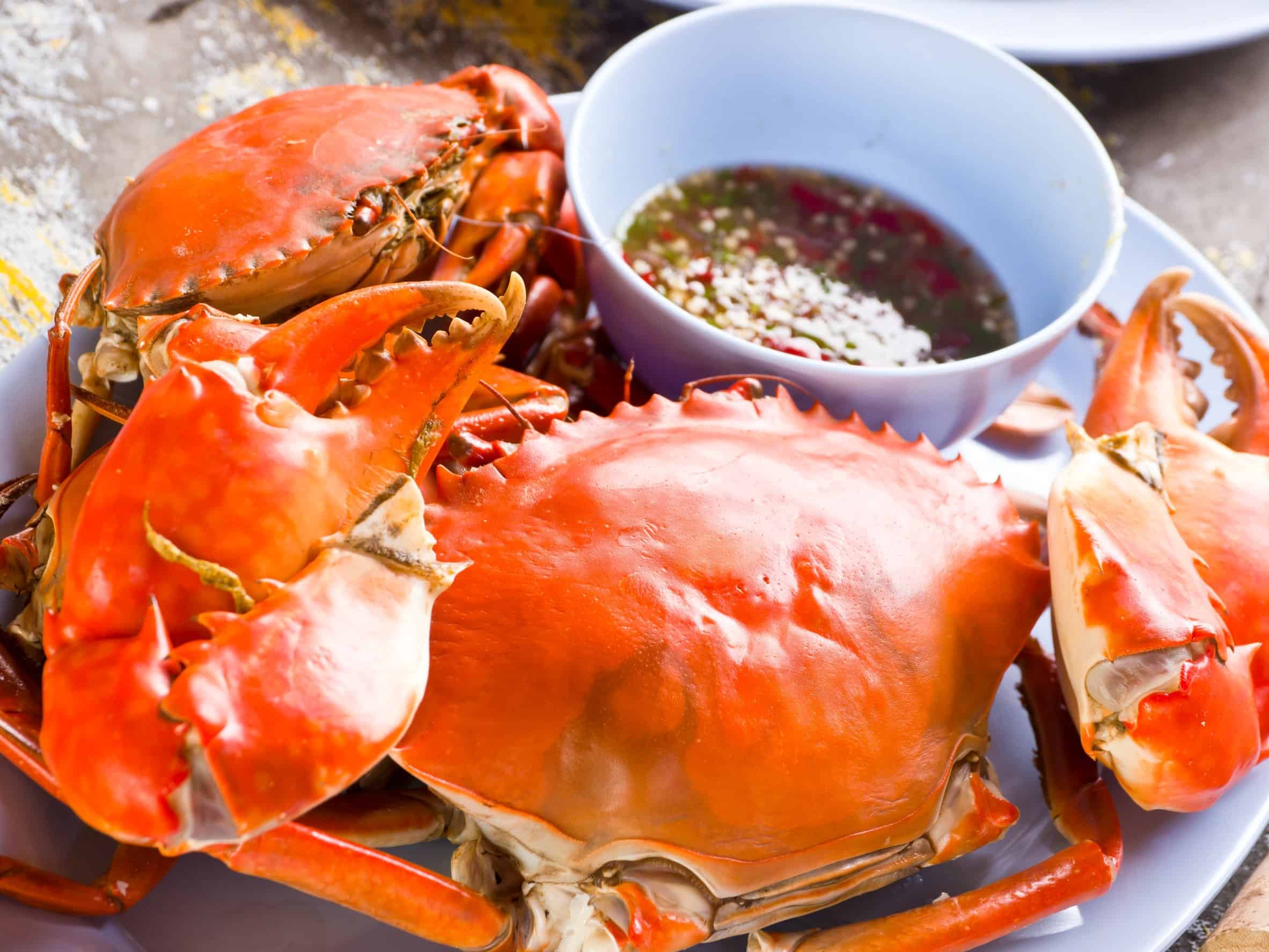
This might vary a bit, but a bushel of average-sized (medium-large) crabs should feed at least 6-8 people. Most people can eat around 8-12 crab’s worth of meat. If you’re serving it with other food, you could lower that approximation to about half a dozen crabs per person.
Final Thoughts
A bushel of crabs measures volume, not quantity. It’s subject to change depending on your crab’s size, gender, and how recently they’ve molted. You want to buy bigger crabs for your bushel to get the most meat off them. You also want to steer clear of female crabs, as they won’t provide very good returns for the effort it takes to deshell them.

